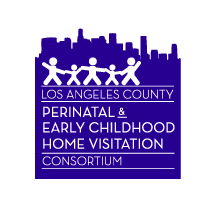May Budget Revise Impacts on Children and Families
Every year, the governor of California proposes a financial budget that directly affects funding for many public health programs in Los Angeles County. Following is a list of relevant proposals to help families and home visiting professionals gain a better understanding of which programs are included in the budget proposal. The governor's May budget revise targets K-12 and older youth mental health, but does not make large investments in kids' health, infant and toddler mental health, education (cradle to career), child welfare and economic security domains.
Home Visiting
Increases for home visiting outlined in the January proposed budget were retained in the May proposal. The increases are:
$50 million ongoing General Fund for the Department of Public Health (CDPH) to expand the California Home Visiting Program and the California Black Infant Health Program, serving approximately 6,000 additional families over five years on top of 3,700 currently served by the Home Visiting Program and 1,650 served by the Black Infant Health Program.
The Budget proposes greater flexibility for the home visiting models offered to meet the diverse needs of families across the state, expands home visiting services to additional counties, and makes them accessible to families with the highest needs.
This proposal will support early literacy by including books and early literacy programming, provided by home visitors, and will be further supported by a $350 million General Fund investment to recruit, train, and certify new community health workers.
Early Childhood
The governor’s May revision invests in the waiving of family fees, funding for dual language learners, students with disabilities, along with other items. Unfortunately, the May revision does not consider extending the current wage replacement rates for Paid Family Leave. The current policy only reimburses 60-70% of an individual’s weekly salary if they need to take time off because of an illness or to care for a loved one. Additionally, the May revision does not include the $250 million request for early childhood mental health that was requested by Consortium member organization Children Now organization. All funding proposals concerning early childhood are listed below.
Pre-Kindergarten Education
The May revision helps increase pre-kindergarten enrollment rates as this is an important step in improving equity in public education.
State Preschool Family Fee Waivers—For the 2022-23 school year, providing $21.3 million one-time General Fund to waive the family share of the cost for children participating in the State Preschool Program.
State Preschool Program adjustment factors for students with disabilities and dual language learners—Increasing the costs to support revised State Preschool Program adjustment factors for students with disabilities and dual language learners to $201.8 million Proposition 98 General Fund and $140.6 million General Fund, respectively.
Child Care
California continues to expand the state’s childcare system, especially for underserved communities.
The May Revision proposes $200 million to develop and repair existing childcare infrastructure, especially for vulnerable populations.
CalWORKs Grant Increase—The May Revision reflects an 11-percent increase to CalWORKs Maximum Aid Payment levels, which is estimated to cost $296.2 million in 2022-23.
The May Revision includes $6.3 billion ($2.7 billion General Fund) for childcare programs.
Additional Proposed Investments in Early Childhood
The May revision invests in early intervention services for children experiencing developmental delays.
Eligibility for Early Start Early Identification & Intervention—the May Revision includes $6.5 million General Fund in 2022-23, increasing to $29.5 million General Fund in 2024-25, to support adjustments in identifying children with qualifying signs of developmental delays.
Health
The May revision focuses on advancing equity, addressing COVID-19-driven health disparities, and improving quality measures in children’s preventive, maternity, and behavioral health care. Unfortunately, there are no funding efforts directed at infants and toddlers for improving mental health services or outreach.
Maternal and Child Health
The May revision proposes increases in reproductive health, early childhood-focused efforts, and vaccine distributions.
Reproductive Health- $57 million General Fund to maintain and improve availability of safe and accessible reproductive health care.
$100 million to further support early childhood-focused efforts, including grants focused on encouraging health care provider integration with other early-childhood-focused programs.
Vaccines- $93 million in total to prioritize vaccination of youth under five years old, additional boosters for eligible populations over 50 years old, and continuation of mobile vaccination sites through the end of 2022-23.
Medi-Cal Coverage and Care for Mothers and Children
Efforts to advance equity for Medi-Cal recipients include additional funding for the Equity and Practice Transformation Grants, Covered California Affordability subsidies, and doula benefits.
Equity and Practice Transformation Grants- the May Revision proposes an additional $300 million for Equity and Practice transformation payments. These payments will focus on advancing equity, addressing COVID-19-driven health disparities, and improving quality measures in children’s preventive, maternity, and behavioral health care.
Extension of Covered California Affordability Subsidies-the administration is proposing $304 million to extend health insurance premium assistance under Covered California for upwards of 700,000 Californians in families earning up to 600% of the federal poverty level ($166,500 annually for a family of four).
Doula Benefit- proposes an increase to the maximum reimbursement rate per birth from an average of $450 to $1,094 per birth to better align with rates in other Medicaid programs as well as an implementation shift from July 2022 to January 2023.
There may be future advocacy efforts directed towards children and families since the state is reporting to be 2.6 billion dollars below the Gann Limit. If you would like to read more about the budget, click here.


